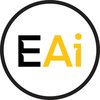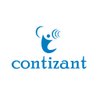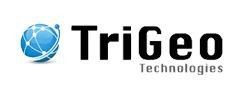Filter interviews by
Provlabs India Analyst Interview Questions and Answers
Provlabs India Analyst Interview Experiences
1 interview found
I applied via Walk-in and was interviewed before Feb 2023. There were 2 interview rounds.
Count the words have come in the sentence
(2 Questions)
- Q1. Personal information
- Q2. Salary discussion
Interview Preparation Tips
- Python
Top trending discussions






Interview questions from similar companies

I applied via campus placement at Bharati Vidyapeeth's College of Engineering for Women, Pune and was interviewed in Oct 2024. There were 3 interview rounds.
Permutations, probability etc
(5 Questions)
- Q1. Dbms ,oops , dsa
- Q2. Write SQL query for joining two tables
- Ans.
SQL query for joining two tables
Use the JOIN keyword to combine rows from two or more tables based on a related column between them
Specify the columns to be retrieved using SELECT statement
Use ON keyword to specify the join condition
- Q3. Analysis questions consists comparison
- Q4. Array indexing, sorting array
- Q5. Reverse the string
- Ans.
Reverse a given string
Use a loop to iterate through the characters of the string and build a new string in reverse order
Alternatively, you can use built-in functions like reverse() or StringBuilder in some programming languages
Basic GD topic was there
Interview Preparation Tips
Skills evaluated in this interview

(1 Question)
- Q1. R&D systems design mostly asked

Interview Questionnaire
1 Question
- Q1. There is a number lock on a bag. It has numbers from 1-8. The lock can open if any 2 of 3 numbers in the bag is correct. You have to open the bag in minimum number of steps
- Ans.
To open the number lock on the bag, you need to try combinations of three numbers, ensuring that at least two of them are correct.
Start by trying the combinations of the first two numbers with each of the remaining six numbers.
If none of these combinations work, move on to the next pair of numbers and repeat the process.
Continue this pattern until you find a combination that opens the lock.
Interview Preparation Tips
Experience: A puzzle was asked first.
I was then given a case study : You own a telecom company. You have various customers. They have joined you 3 years ago,6 months ago and some recently. How do you define who is a good customer?
Round: Other Interview
Experience: It was only for 15 minutes. I was asked a question related to boy girl paradox. Then the job was offered.
Tips: Be cool and try to be less nervous. Do not try to speak about the things that you have no idea about
General Tips: Go to the interview with a cool mind. Take a trusted person with you if you are shortlisted on day 1.
College Name: IIT KANPUR
I applied via Naukri.com and was interviewed in Sep 2024. There were 2 interview rounds.
Test Paper Task, which is to be given in a Word Document.
1. WireFraming
2. User Story Writing
3. Use Case
4. Sequence Diagram
(19 Questions)
- Q1. Education Background and Work Experience
- Q2. How Educational Background Helped in IT Industry
- Ans.
Educational background in IT industry provides foundational knowledge, skills, and problem-solving abilities.
Educational background in computer science or related field helps in understanding technical concepts and languages used in IT industry.
Analytical and critical thinking skills acquired through education are essential for analyzing data and solving complex problems in IT projects.
Project management and communicat...
- Q3. 4 Requirement Development Component required in Req. gathering phases
- Ans.
Requirement development components in requirement gathering phases
Stakeholder analysis
Interviews with stakeholders
Document analysis
Observations
Prototyping
Brainstorming sessions
- Q4. What are Requirement Elicitation technique
- Ans.
Requirement elicitation techniques are methods used to gather and clarify requirements from stakeholders.
Interviews with stakeholders to understand their needs and expectations
Surveys and questionnaires to collect feedback from a larger group of stakeholders
Observations of current processes or systems to identify areas for improvement
Prototyping to visualize requirements and gather feedback early in the process
Brainsto...
- Q5. What is the next step after requirement gathering
- Ans.
The next step after requirement gathering is analyzing the gathered requirements to identify patterns, prioritize needs, and create a solution.
Analyze the gathered requirements to identify patterns and common themes
Prioritize the needs and requirements based on business goals and constraints
Create a solution design or proposal that addresses the identified requirements
Collaborate with stakeholders to validate the propo
- Q6. Difference between Validation & Verification
- Ans.
Validation ensures the product meets the customer's requirements, while verification ensures the product is built correctly.
Validation is checking if the right product is being built, while verification is checking if the product is being built right.
Validation involves evaluating the product against customer requirements, while verification involves checking the product against specifications.
Validation is subjective ...
- Q7. What is [project initiation plan
- Ans.
A project initiation plan is a document that outlines the objectives, scope, and deliverables of a project.
Defines the purpose and goals of the project
Identifies key stakeholders and their roles
Outlines the project scope and constraints
Includes a high-level timeline and budget estimate
Provides a roadmap for project execution
- Q8. Roles of different Stakeholders in the Business Analysis process
- Ans.
Stakeholders in business analysis include project sponsors, end users, developers, and testers.
Project sponsors provide funding and support for the project.
End users provide input on requirements and usability.
Developers implement the solutions based on requirements.
Testers ensure the quality of the final product.
Other stakeholders may include managers, customers, and regulatory bodies.
- Q9. What is RACI metrics
- Ans.
RACI metrics are used to define roles and responsibilities within a project or organization.
RACI stands for Responsible, Accountable, Consulted, and Informed
It helps clarify who is responsible for what tasks and decisions
Example: R - John is responsible for data analysis, A - Sarah is accountable for project success, C - Mark is consulted for technical expertise, I - Emily is informed of project updates
- Q10. What is RTM metrics
- Ans.
RTM metrics refer to the metrics used to track and measure the requirements traceability matrix.
RTM metrics help in tracking the progress of requirements throughout the project lifecycle.
They measure the coverage of requirements, identify gaps, and ensure all requirements are met.
Examples of RTM metrics include requirement status (e.g. implemented, in progress, pending), requirement source, and requirement priority.
- Q11. What is the MoSCoW matrix
- Ans.
MoSCoW matrix is a prioritization technique used in project management to categorize requirements into Must have, Should have, Could have, and Won't have.
MoSCoW stands for Must have, Should have, Could have, and Won't have
Must have - essential requirements that are critical for project success
Should have - important requirements that are high priority but not critical
Could have - desirable requirements that are nice to...
- Q12. How to prioritize the requirement
- Ans.
Requirements should be prioritized based on business value, impact on stakeholders, and feasibility.
Identify and prioritize requirements that align with the organization's strategic goals.
Consider the impact on stakeholders and prioritize requirements that address their needs.
Assess the feasibility of implementing each requirement and prioritize those that are achievable within constraints.
Use techniques like MoSCoW pr...
- Q13. What are the use cases
- Ans.
Use cases are specific scenarios where a product or service can be used to solve a particular problem or achieve a specific goal.
Identifying business needs and requirements
Improving processes and workflows
Enhancing decision-making through data analysis
Optimizing resource allocation
Increasing customer satisfaction
Reducing costs and increasing efficiency
- Q14. What does it mean by 'Alternate flow of Use Cases'
- Ans.
Alternate flow of Use Cases refers to scenarios in which the main flow of a use case is deviated due to certain conditions or exceptions.
Alternate flow describes deviations from the main flow of a use case
It represents different paths that a use case can take based on conditions or exceptions
These alternate flows are usually documented to ensure all possible scenarios are considered
Examples include error handling, vali...
- Q15. How JIRA is used in project management
- Ans.
JIRA is a project management tool used for tracking tasks, issues, and progress in projects.
JIRA allows users to create and assign tasks to team members
It provides a centralized platform for tracking project progress and deadlines
Users can create custom workflows and dashboards to visualize project status
JIRA integrates with other tools like Confluence and Bitbucket for seamless collaboration
- Q16. Ever Worked on pre-sales? (Effort & Cost estimation)
- Ans.
Yes, I have experience working on pre-sales efforts and cost estimation.
I have worked on creating proposals and estimates for potential clients
I have experience analyzing requirements and determining the effort needed for a project
I have collaborated with sales teams to provide accurate cost estimates
I have used tools and techniques such as cost-benefit analysis and risk assessment in pre-sales activities
- Q17. Explain the previous project where you worked
- Ans.
Implemented a data analytics solution for a retail company to optimize inventory management
Analyzed historical sales data to identify trends and patterns
Developed predictive models to forecast demand and optimize inventory levels
Collaborated with cross-functional teams to implement the solution and train end users
- Q18. What is Business Process Modeling
- Ans.
Business Process Modeling is the visual representation of a business process to analyze, improve, and optimize its efficiency.
It involves creating diagrams or flowcharts to illustrate the steps, activities, and decisions involved in a business process.
Business Process Modeling helps in identifying bottlenecks, redundancies, and inefficiencies in a process.
It can be used to simulate different scenarios and analyze the i...
- Q19. This company is in the Power Sector, How will you work in this new domain?
- Ans.
I will leverage my analytical skills to understand the unique challenges and opportunities in the Power Sector and collaborate with stakeholders to drive effective solutions.
Conduct thorough research on the Power Sector to understand industry trends, regulations, and key players
Collaborate with internal teams and stakeholders to gather requirements and identify pain points
Utilize data analysis and modeling techniques t...
Interview Preparation Tips
Skills evaluated in this interview

I applied via campus placement at Sri Venkateswara College of Engineering, Chennai and was interviewed before Nov 2023. There were 3 interview rounds.
Basic Aptitude (prob, )
(1 Question)
- Q1. Basic sql and exel
(1 Question)
- Q1. Tell me about your self
I was interviewed in Apr 2023.

Project assigned for creating new website
(2 Questions)
- Q1. Interview with reporting managers virtually
- Q2. About the previous role
(1 Question)
- Q1. HR asked about the previous job and all
Interview Preparation Tips

Business Analyst Interview Questions & Answers
WebMobril Technologiesposted on 4 Sep 2022
I applied via Approached by Company and was interviewed in Mar 2022. There were 2 interview rounds.
(2 Questions)
- Q1. Worst company, they forced employees to take late night calls at 12:00, 2:00,3:00 am after completing 9 office working hours and this is the family business where it has no rules and regulations, no workin...
- Q2. In interview process they did not tell about late night calls that employee has to take and after joining they forced you, even torture you they hold your salary worst company..
(1 Question)
- Q1. 1. Start introduce yourself. Why did you left your last organization
Interview Preparation Tips

Programmer Analyst Interview Questions & Answers
Contizant Technologiesposted on 20 Feb 2024
I applied via Walk-in and was interviewed before Feb 2023. There were 3 interview rounds.
MCQs on Quants, Logical reasoning, English
(1 Question)
- Q1. Technical interview based on Internship projects and Basics of Java, Dot Net and SQL
(1 Question)
- Q1. Based on resume

I applied via Naukri.com and was interviewed in Sep 2022. There were 5 interview rounds.

(1 Question)
- Q1. Basic question related to your profile and Resume.
Focus on core tableau concepts and look and feel of the dashbaords.
(1 Question)
- Q1. Deep dive into joins, relationship, union, data blending, performance tuning, etc.
(1 Question)
- Q1. Case studies question like what will be your response and some basic technical questions.
Interview Preparation Tips
Provlabs India Interview FAQs
Tell us how to improve this page.
Interview Questions for Popular Designations
Provlabs India Analyst Interview Process
based on 1 interview
Interview experience
Interview Questions from Similar Companies
|
Analyst
7
salaries
| ₹1.8 L/yr - ₹3 L/yr |
|
Software Developer
5
salaries
| ₹1.8 L/yr - ₹5 L/yr |
|
Software Analyst
4
salaries
| ₹3.3 L/yr - ₹5 L/yr |
|
Software Engineer
3
salaries
| ₹2.2 L/yr - ₹3.4 L/yr |
|
Programmer Analyst
3
salaries
| ₹1.8 L/yr - ₹2.2 L/yr |

Primus Global Technologies

TriGeo Technologies

Deltra Soft Technologies

Automated Systems Design
- Home >
- Interviews >
- Provlabs India Interview Questions >
- Provlabs India Analyst Interview Questions










